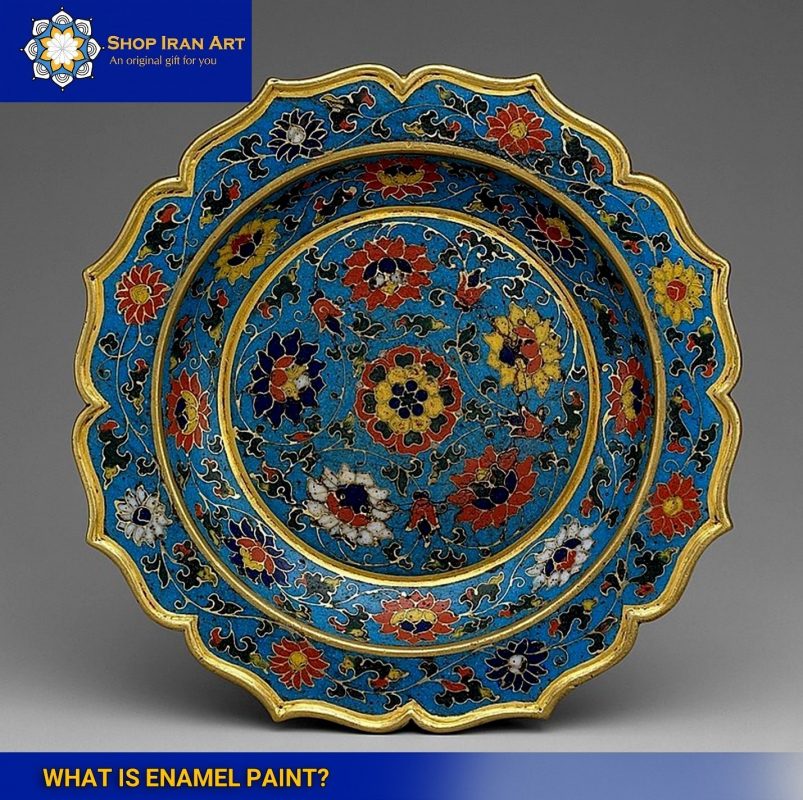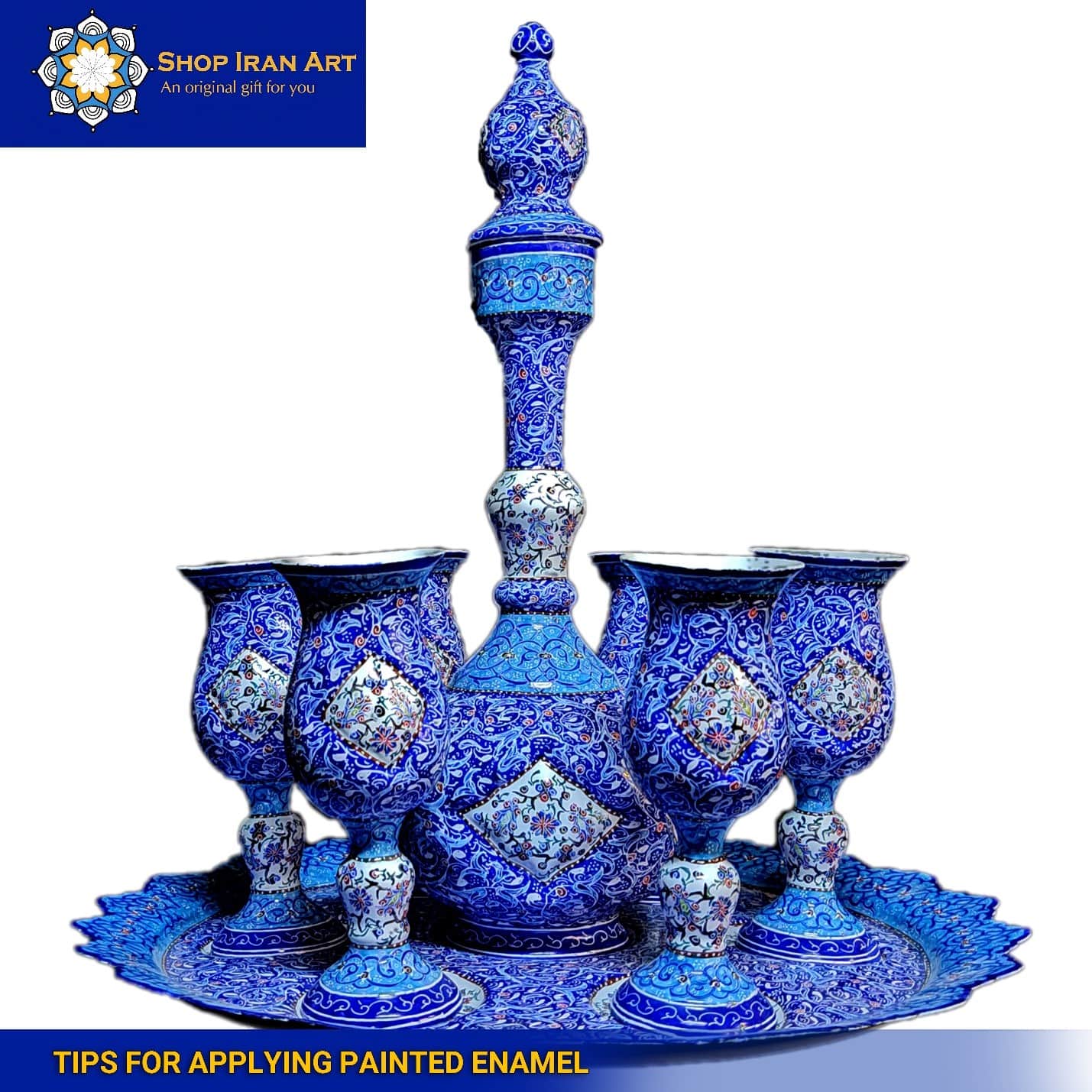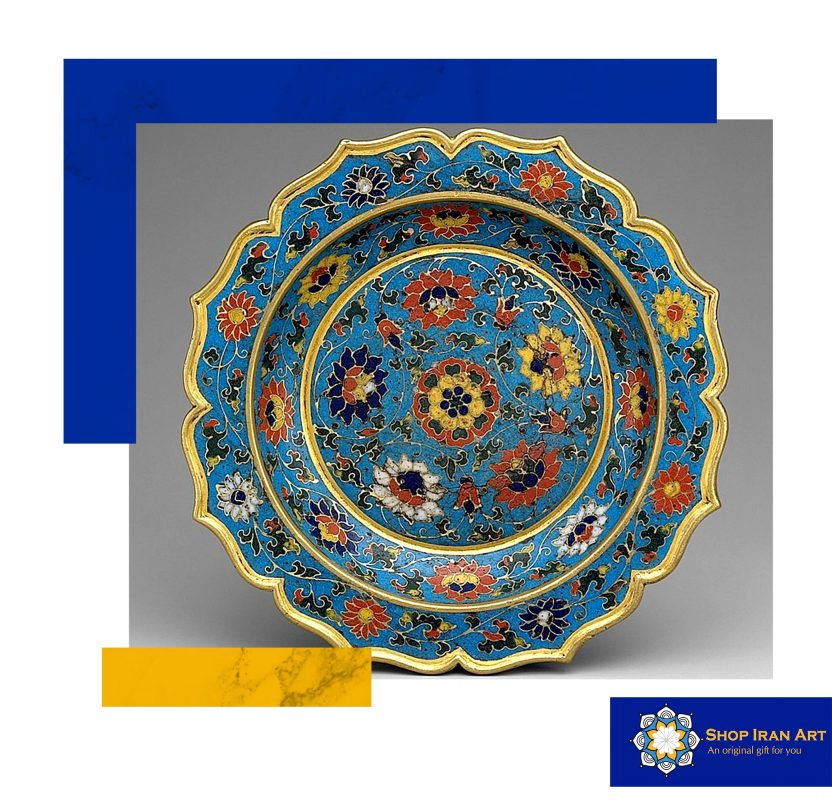Sin categorizar
What Is Painted Enamel
The Artistry of Persian Painted Enamel
In the realm of artistic expression, few crafts evoke the same sense of wonder and timeless beauty as painted enamel. This ancient art form has captured the hearts of art enthusiasts around the world for centuries. With its origins deeply rooted in history, painted enamel has not only stood the test of time but also continues to thrive in the modern era.
In this comprehensive article, we will delve into the enchanting world of painted enamel, exploring its techniques, history, and enduring allure. Additionally, we will highlight the exquisite Persian enamel artifacts available at the esteemed online shop, “Shop Iran Art,” inviting you to embark on your own artistic journey.
What is Painted Enamel?
Painted enamel is a delicate and intricate art form that involves fusing powdered glass onto metal surfaces through a high-temperature firing process. This technique allows for the creation of stunning, vivid designs and intricate patterns. The resulting pieces exhibit a unique blend of translucency, luminosity, and durability that distinguishes painted enamel from other art forms.

What is Enamel Paint?
Enamel paint, on the other hand, is a type of paint that mimics the appearance of true enamel but is composed of different materials. Unlike painted enamel, which involves fusing glass onto metal, enamel paint is typically oil-based or water-based, and its composition may vary depending on the desired application. While enamel paint can create a glossy and durable finish, it is distinct from the art of painted enamel.
The Difference between Enamel Paint and Painted Enamel
Although both enamel paint and painted enamel share the name “enamel,” they are fundamentally different in their composition, purpose, and artistic value. Enamel paint is primarily used for coating surfaces and is not a form of artistic expression. Painted enamel, on the other hand, is a traditional craft that combines meticulous craftsmanship with artistic ingenuity, resulting in exquisite works of art.
The History of Painted Enamel
Ancient Origins
The history of painted enamel dates back thousands of years, with evidence of early enamelwork found in ancient Egyptian and Greek civilizations. However, it was during the Byzantine Empire that painted enamel flourished, adorning religious icons and jewelry with its vibrant colors and intricate designs.

The Renaissance Revival
During the Renaissance period, painted enamel experienced a revival in Europe. The craft became highly prized among the aristocracy, and prominent artists such as Jean Pénicaud and Pierre Raymond achieved great renowned for their masterful enamel creations.
Persian Enamel, A Legacy of Excellence
In Persia, painted enamel reached its zenith during the Qajar dynasty (1785-1925). Persian artisans infused their distinctive style and cultural motifs into enamelware, creating pieces of exceptional beauty and sophistication. Persian enamel artifacts stand as a testament to the rich artistic heritage of Iran, displaying intricate floral patterns, mythical creatures, and scenes from Persian mythology.
Tips for Applying Painted Enamel
The creation of painted enamel involves a meticulous step-by-step process. It begins with a metal base, usually copper or silver, which is shaped and prepared for enamel application. The artist then applies layers of powdered glass mixed with pigments onto the metal surface, meticulously building up the design. Each layer is fired in a kiln at high temperatures, allowing the enamel to melt and fuse with the metal. This firing process is repeated multiple times, creating depth, luster, and durability in the finished piece.

Achieving mastery in painted enamel Requires years of practice, precision, and a keen eye for detail. Skilled artisans must possess a profound understanding of the properties of glass, an extensive color palette, and the ability to adapt and innovate within the constraints of the medium. Each brushstroke is deliberate and purposeful, breathing life into the artwork and evoking emotions in the viewer.
The Allure of Persian Enamel Artifacts
Persian enamel artifacts encapsulate the rich cultural heritage of Iran. The intricate designs and motifs reflect the country’s long and storied history, capturing the essence of Persian art and mythology. From delicate floral patterns to captivating scenes from epic tales, these artifacts carry within them the soul of a nation.
For art enthusiasts seeking to own a piece of this timeless craft, “Shop Iran Art” offers an exquisite collection of Persian enamel artifacts. With their commitment to quality, authenticity, and a vast selection of stunning pieces, they provide a seamless online shopping experience. Whether you are a seasoned collector or a passionate admirer of fine art, “Shop Iran Art” is your gateway to acquiring exceptional Persian enamel pieces that will enhance any collection or adorn your living space.
Epilogue
Painted enamel stands as a testament to the profound artistic capabilities of humanity. Its rich history, intricate techniques, and enduring beauty continue to captivate art lovers worldwide. Through the meticulous fusion of powdered glass and metal, painted enamel breathes life into captivating designs, creating vibrant masterpieces that transcend time. Persian enamel artifacts, in particular, invite us to explore the cultural tapestry of Iran and connect with the artistic legacy of this remarkable civilization. Delve into this enchanting world, embrace the allure of Persian enamel, and allow yourself to be transported into a realm of timeless beauty and artistic brilliance.
What is painted enamel?
Painted enamel is a delicate art form that involves fusing powdered glass onto metal surfaces to create intricate designs.
Is enamel a type of paint?
Enamel is not a type of paint. Enamel refers to the fused glass material used in painted enamel, while enamel paint is a different type of coating.
Where can I find Persian enamel artifacts?




